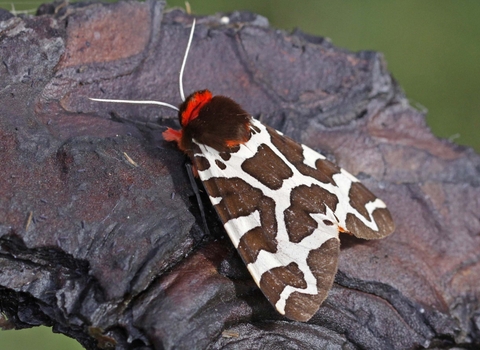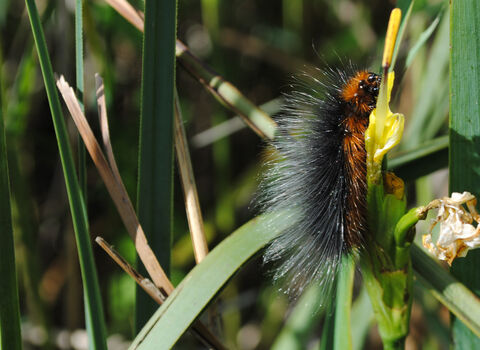Garden tiger moth by Iain H Leach

Garden tiger moth ©Margaret Holland

Garden tiger caterpillar ©Amy Lewis
Garden tiger moth
The garden tiger is an attractive, brown-and-white moth of sand dunes, woodland edges, meadows and hedgerows; it will also visit gardens. In decline, it is suffering from the 'tidying up' of our countryside.
Scientific name
Arctia cajaWhen to see
July to AugustTop facts
Category
Stats
Wingspan: 5.0-7.8cmPriority Species under the UK Post-2010 Biodiversity Framework.
